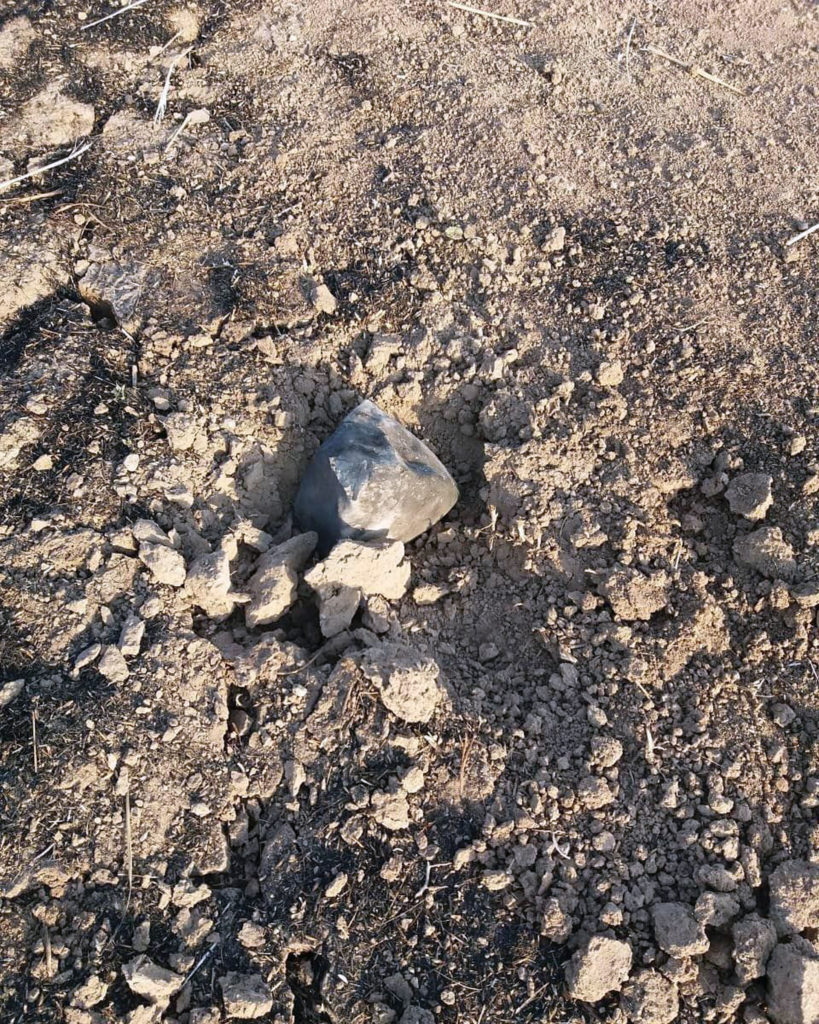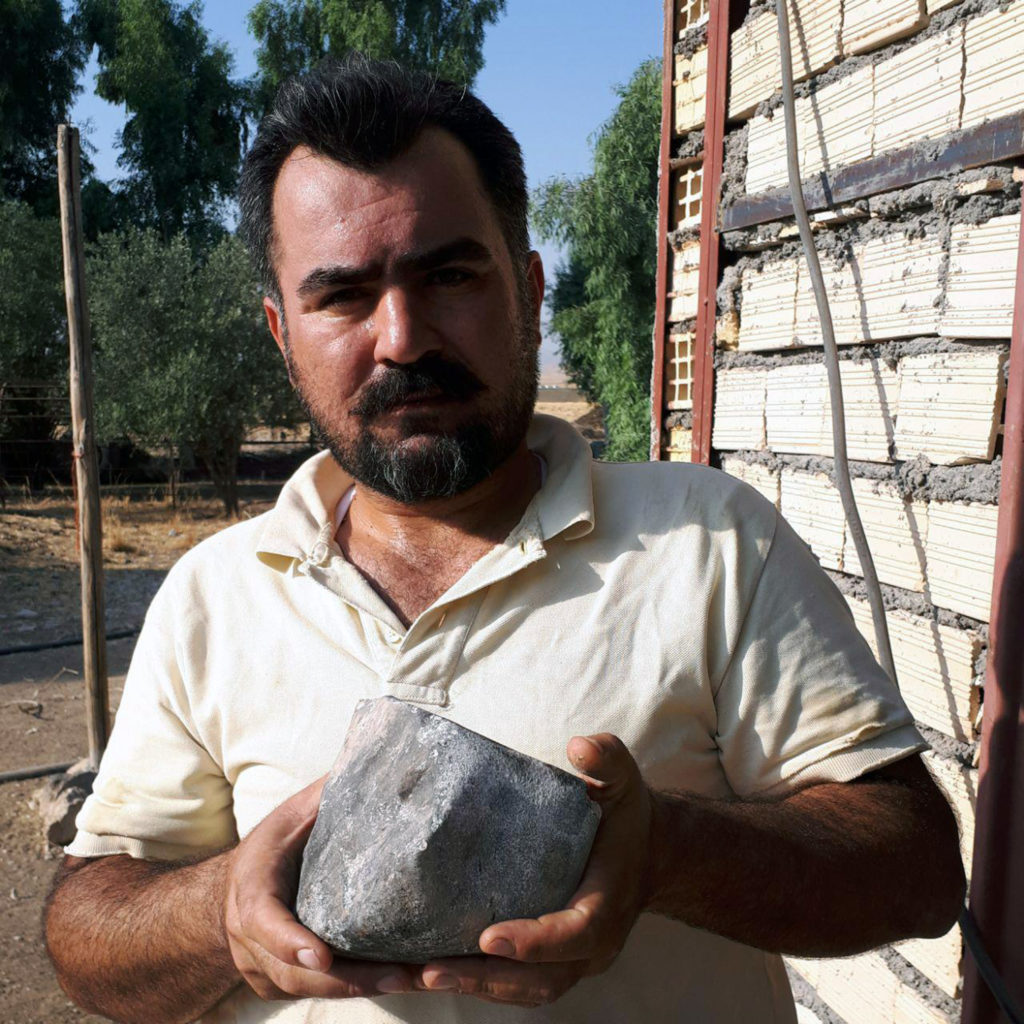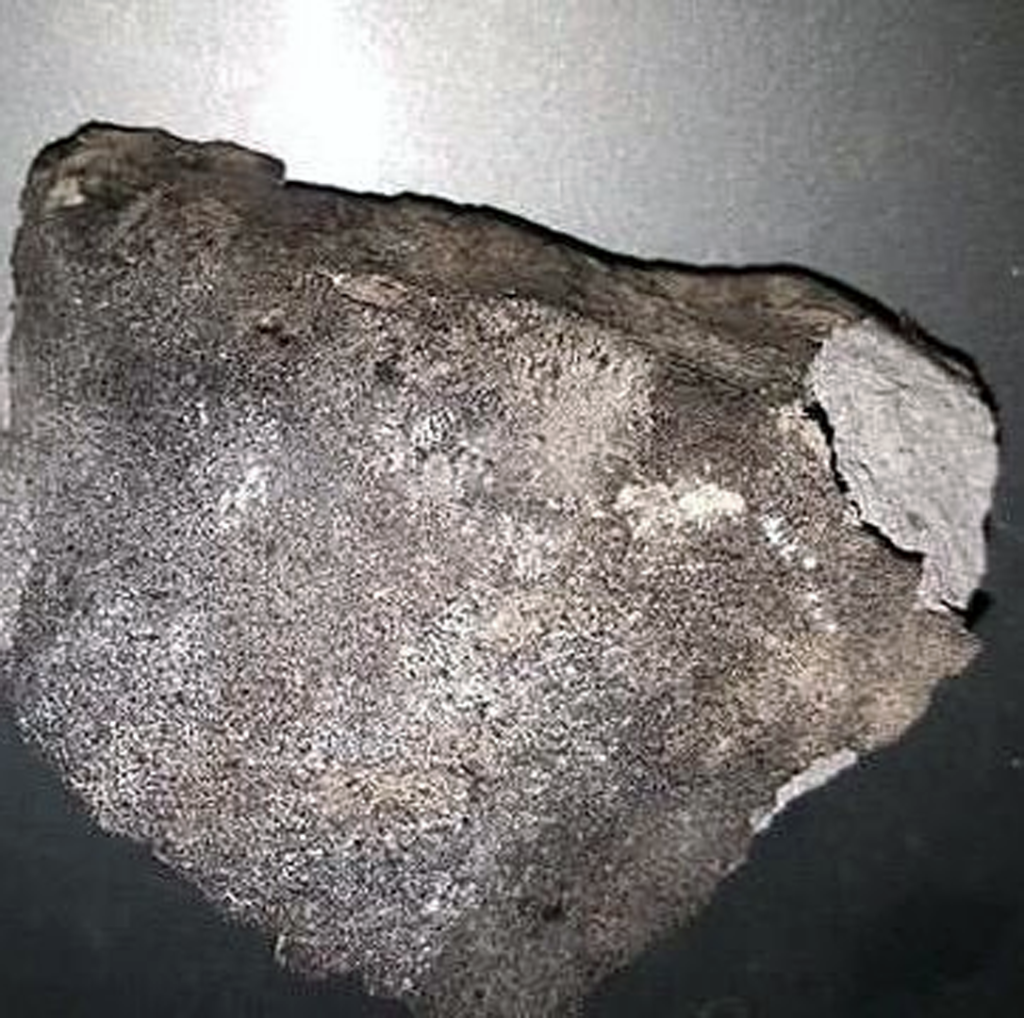Taqtaq-e Rasoul (H5, ~ 2 kg / (تق تق رسول ), witnessed fall near Taesheh Mahmud Nazari (طایشه محمود نظری), Dasht-e Zahab (دهستان دشت ذهاب), Sarpol-e Zahab (شهرستان سرپل ذهاب) Kermānschāh province, Iran at ~7.50 a.m. local (4.20 a.m. GMT) on 10 August 2019 officially registered
At around 7.50 a.m. local time (4.20 a.m. GMT) in the morning of 10 August 2019, residents of several villages in the Dasht-e Zahab (دهستان دشت ذهاب) region of the Kermanshah province in Iran heard loud explosions like thunder. Then buzzing noises were heard which the locals compared to flying drones. Because of the clear sky at the time of the fall, locals associated the heard sounds with military missions in the area. Mrs. Gohari, a resident of the village of Taq Taq-e-Rasoul (تق تق رسول) which is situated close to a hill of the same name, noticed a dust cloud on the ground of her family yard nearby and the dogs gathered excitedly around her for a few minutes after hearing the unusual sounds. She found the meteorite of about 2 kg in a small pit at location 34°36’56.0″N, 45°46’08.0″E. She called her son Saman Gohari (سامان گوهری) who arrived at the fall location after about 20 minutes. When Saman touched the meteorite he noticed that it was still hot. When the police arrived the finders Saman and Sasan Gohari (ساسان گوهری) presented the meteorite which unfortunately was deliberately broken into several fragments. A search campaign in the area around the farm did not result in additional meteorite finds. Hamed Pourkhorsandi from the Department of Earth and Environment Sciences at Université Libre de Bruxelles (ULB) was informed about the fall by his friend Hojjat Kamali who also organized the transfer of about 44 grams of fragments to Pourkhorsandi who then classified the meteorite together with J. Gattacceca. A fragment of the meteorite is on display at Hojjat Kamali’s meteorite museum at Tehran’s Azadi Tower (Borj-e Azadi) which opened in early July 2019.

The intact meteorite at its fall location in Tag Taq-e-Rasoul (تق تق رسول ). Photo: Hamed Pourkhorsandi / Saman Gohari (سامان گوهری)
Tagtaq-e Rasoul 34° 36′ 56″N, 45° 46′ 8″E
Bakhtaran, Iran
Confirmed fall: 2019
Classification: Ordinary chondrite (H5)
History: Around 07h50 local time (GMT+3.5) on 10 August 2019, residents of several villages in Dasht-e Zahab region of Kermanshah province in Iran heard loud explosions like thunder. They were followed by noises similar to flying drones. Moments later, Madam Gohari a resident of Taqtaq-e Rasoul village (next to a hill with a similar name) noticed an object fall in their family yard, producing dust and getting dogs excited, surrounding it. After receiving a call from his mother about the event, Saman Gohari arrived at the site after 20 ‘. Informed about meteorites, he collected the stone (claiming that the stone was still hot). Because of site’s vicinity to Iraq’s border (~4 km), police investigated the site and the rock was broken into several pieces (two main pieces). As the area close to the border is covered by land mines, searching for more fragments was not possible. Several search attempts in the farms around the house and the villages failed to find additional fragments. A ~30 g fragment, along with several small fragments (~14 g together) were sent to Hamed Pourkhorsandi for study.
Physical characteristics: Originally a single stone was covered with fusion crust. A layer of soil was visible on the surface, resulting from its impact with the ground. Light-gray interior hosts chondrules. Metal and sulfide grains are visible by naked eye.
Petrography: Chondrite with recrystallized texture. Plagioclase average size is 40 µm. Opaque minerals are Fe,Ni metal and troilite.
Geochemistry: Olivine Fa19.1±0.3 (n=5), orthopyroxene Fs17.0±0.1Wo1.3±0.1 (n=4), plagioclase An12.2Ab83.4Or4.4 (n=1).
Classification: Ordinary chondrite (H5) based on petrography, magnetic susceptibility and mineral chemistry.
Specimens: A piece of ~1050 g is with the finders, ~650 g is with the police, and ~260 g is in Hojat Kamali’s private collection. Type specimen (30 g) and a polished section at CEREGE. 14 g at RBINS.
| State/Prov/County: | Bakhtaran |
| Date: | 2019 Aug 10 |
| Latitude: | 34°36’56.1″N |
| Longitude: | 45°46’07.7″E |
| Mass (g): | ~2000 |
| Pieces: | 1 |
| Class: | H5 |
| Weathering grade: | W0 |
| Fayalite (mol%): | 19.1±0.3 (n=5) |
| Ferrosilite (mol%): | 17.0±0.1 (n=4) |
| Wollastonite (mol%): | 1.3±0.1 (n=4) |
| Magnetic suscept.: | 5.53 |
| Classifier: | H. Pourkhorsandi (ULB) and J. Gattacceca (CEREGE) |
| Type spec mass (g): | 30 |
| Type spec location: | CEREGE |
| Main mass: | With the finders (Sasan and Saman Gohari) |
| Finder: | Sasan and Saman Gohari |
| Comments: | Submitted by Hamed Pourkhorsandi |

Saman Gohari (سامان گوهری) holding the intact meteorite. Photo: Hamed Pourkhorsandi
Hojat Kamali’s ~260-gram specimen. Photo: Hojat Kamali

Apparently a fragment of the meteorite. Photo: Hamed Pourkhorsandi

































